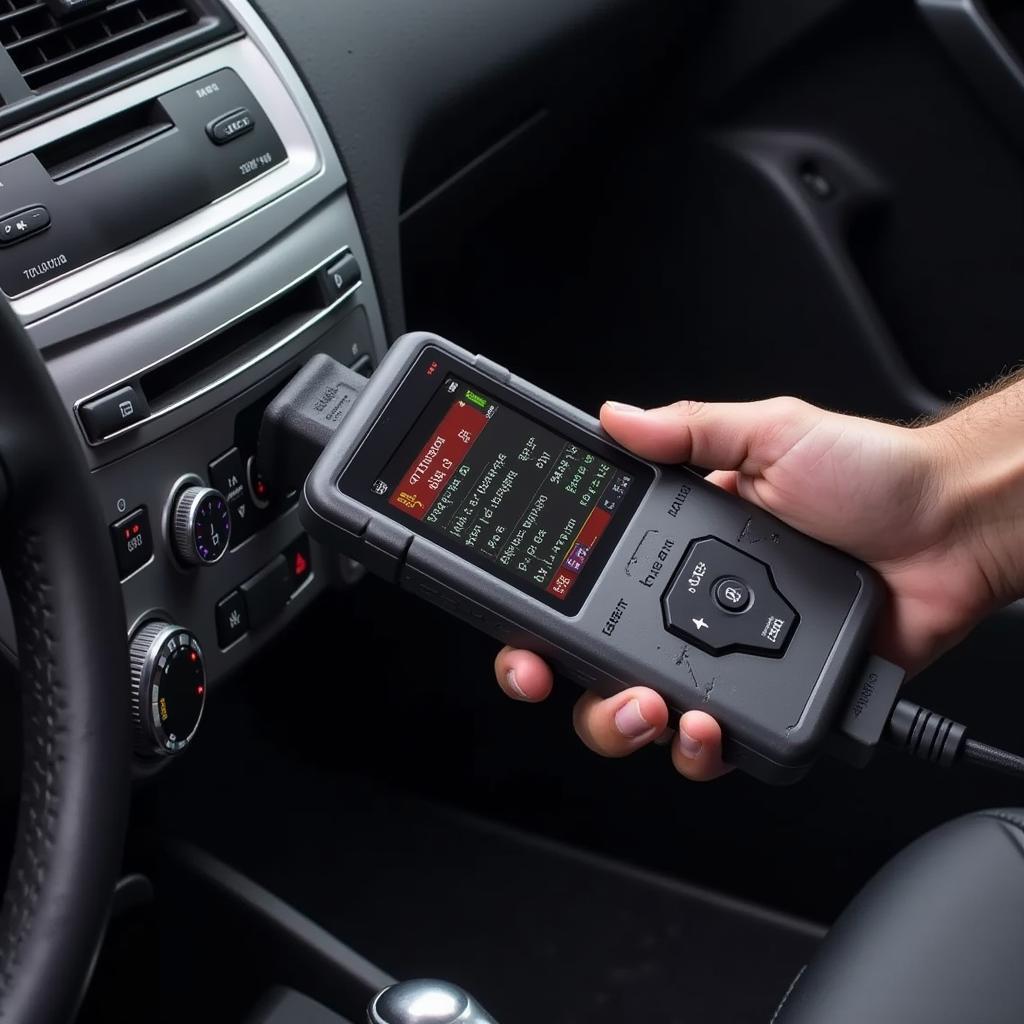Modern vehicles are complex technological marvels, a symphony of mechanical and electronic systems working in concert. When something goes wrong, pinpointing the issue can feel like searching for a needle in a haystack. This is where diagnostic tools become indispensable, offering the power to transform troubleshooting from a guessing game into a precise science. The right diagnostic tools empower automotive technicians, shop owners, and even DIY-savvy car owners to achieve their repair goals efficiently and effectively.
Similar to a diagnostic tool for organizational change, identifying the root cause of a vehicle malfunction is crucial for effective repair. Whether you’re a seasoned professional or a weekend warrior, understanding the capabilities and applications of various diagnostic tools is key to successful automotive repair.
Understanding the Landscape of Automotive Diagnostic Tools
Diagnostic tools have evolved significantly from simple code readers to sophisticated systems capable of analyzing complex vehicle networks. These tools provide invaluable insights into the inner workings of a vehicle, enabling technicians to diagnose problems accurately and avoid unnecessary part replacements.
What are the Different Types of Diagnostic Tools?
From basic code readers to advanced scan tools, the range of diagnostic tools available can be overwhelming. Understanding the differences is crucial for selecting the right tool for your needs.
- Code Readers: These entry-level tools retrieve Diagnostic Trouble Codes (DTCs), providing a starting point for troubleshooting.
- OBD-II Scanners: These more advanced tools offer live data streaming, allowing you to monitor sensor readings in real-time. They also provide access to more detailed diagnostic information.
- Oscilloscope: This versatile tool allows visualization of electrical signals, enabling in-depth analysis of sensor performance and circuit integrity.
- Pressure Transducers: These tools accurately measure pressure in various systems, such as fuel, oil, and transmission, helping diagnose leaks and other pressure-related issues.
- Specialized Diagnostic Software: Many manufacturers offer proprietary diagnostic software that provides access to advanced functions and data specific to their vehicles.
Diagnostic Tools to Achieve Goals: A Practical Approach
Selecting the right diagnostic tool is only the first step. Knowing how to use these tools effectively is essential for achieving your repair goals.
How to Use Diagnostic Tools Effectively?
Using diagnostic tools effectively requires more than simply plugging them in. A methodical approach is crucial for accurate diagnosis and efficient repair.
- Identify the Symptoms: Start by gathering as much information as possible about the problem. This includes noting any warning lights, unusual noises, or performance issues.
- Retrieve DTCs: Use a code reader or scanner to retrieve any stored DTCs. These codes provide valuable clues about the potential source of the problem.
- Research the Codes: Consult reliable sources, such as repair manuals or online databases, to understand the meaning of the retrieved DTCs.
- Analyze Live Data: Use an OBD-II scanner or specialized software to monitor live data streams from relevant sensors. This helps pinpoint the faulty component or system.
- Perform Targeted Tests: Based on your analysis, perform targeted tests using appropriate diagnostic tools, such as an oscilloscope or pressure transducer.
- Verify the Repair: After completing the repair, use your diagnostic tools to verify that the problem has been resolved and that all systems are functioning correctly.
Similar to an entrepreneurship diagnostic tool, understanding the capabilities of each tool is essential for selecting the right one for the job. For instance, an oscilloscope is invaluable for diagnosing complex electrical issues, while a pressure transducer is essential for diagnosing pressure-related problems.
Maximizing the Value of Your Diagnostic Tools
Investing in diagnostic tools is a smart move for any automotive professional or enthusiast. However, maximizing the value of these tools requires ongoing learning and adaptation.
How to Stay Up-to-Date with Diagnostic Technology?
The automotive industry is constantly evolving, with new technologies and diagnostic procedures emerging regularly. Staying up-to-date is crucial for remaining competitive and providing effective repair services.
- Attend Training Courses: Manufacturers and industry organizations offer training courses that cover the latest diagnostic techniques and tools.
- Join Online Forums and Communities: Connect with other automotive professionals online to share knowledge and stay informed about new developments.
- Subscribe to Industry Publications: Stay abreast of the latest industry trends and technological advancements by subscribing to reputable automotive publications.
“Staying current with the newest diagnostic technologies is paramount. It allows you to address complex vehicle issues efficiently and accurately.” – David Miller, Senior Automotive Systems Engineer.
Similar to how a seo diagnostic tool helps optimize online visibility, the right diagnostic tools can significantly enhance your troubleshooting capabilities. Just like an new diagnostic tools for the treatment of diabetes, advancements in automotive diagnostics are constantly improving the accuracy and efficiency of repairs.
Conclusion: Diagnostic Tools are Key to Automotive Success
Diagnostic tools are essential for achieving goals in automotive repair, providing the power to accurately diagnose problems and efficiently complete repairs. From basic code readers to advanced scan tools, the right tools empower technicians and car owners to navigate the complexities of modern vehicles. By understanding the capabilities of these tools and staying up-to-date with the latest diagnostic technologies, you can unlock the full potential of your repair capabilities and achieve your automotive goals.
For further assistance or to discuss your specific diagnostic needs, please don’t hesitate to contact ScanToolUS at +1 (641) 206-8880. Our office is located at 1615 S Laramie Ave, Cicero, IL 60804, USA. We are committed to providing you with the best diagnostic solutions.
 Modern Automotive Repair Shop
Modern Automotive Repair Shop
Similar to a diagnostic tool for jaguar x-type, specialized tools can offer a tailored approach to vehicle diagnostics. By choosing the right tools for your specific needs, you can significantly streamline your workflow and improve the accuracy of your repairs.

